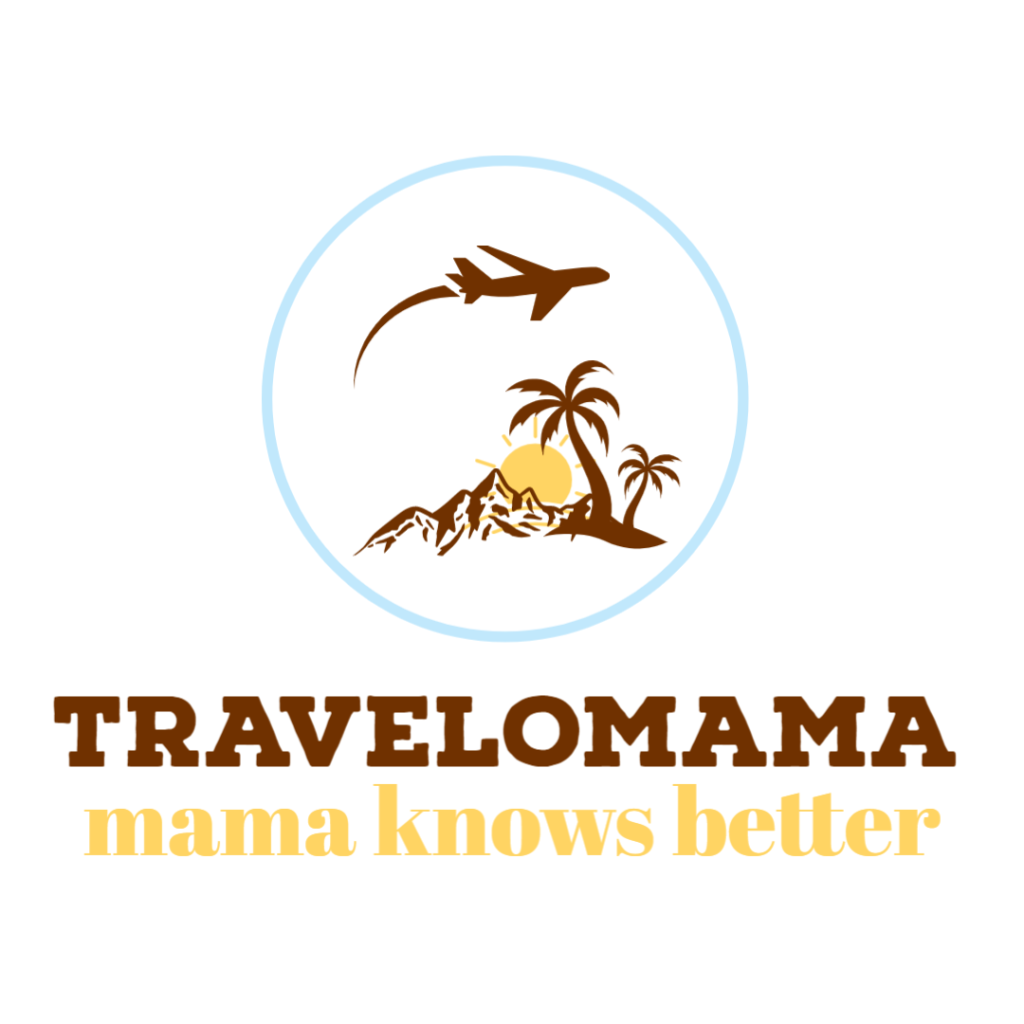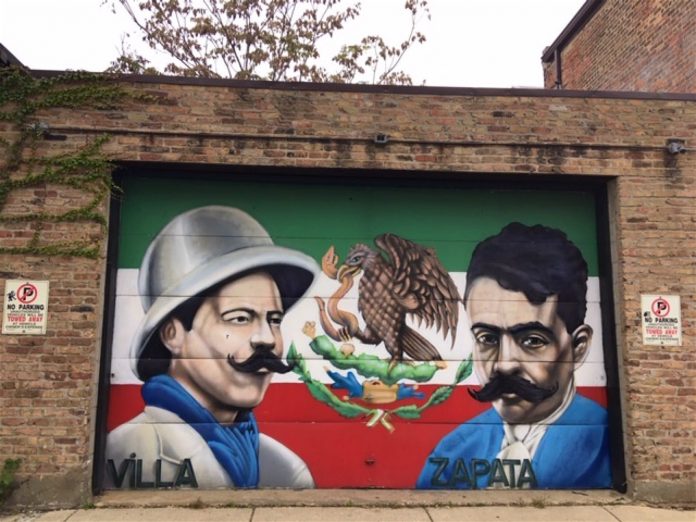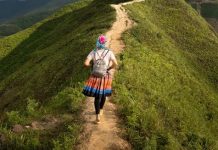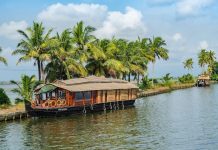The moon has captivated humankind forever, inspiring mythology, songs, art, and scientific observation. This year marks the 50th anniversary of the Apollo 11 missions that took humankind to the moon, and NASA recently announced plans to send astronauts back. All eyes are on the sky, pondering our nearest celestial neighbor. If you want to get to know the moon more intimately than from 238,900 miles away, here are some ways you can celebrate the Apollo 11 anniversary and have lunar experiences here on earth.
 The Museum of the Moon is a 23-foot inflatable replica of the Moon, installed in Ely Cathedral, UK
The Museum of the Moon is a 23-foot inflatable replica of the Moon, installed in Ely Cathedral, UK
Museum of the Moon
Get up close and personal with the moon at Museum of the Moon. Created by UK artist Luke Jerram, this touring exhibit allows you to see the moon in greater detail than ever before. Using NASA imagery, Jerram created a 1:500,000 spherical, self-illuminating scale model of the moon which allows visitors to walk fully around the moon and see every fascinating detail.
As a touring exhibit with several moons on display, the Museum of the Moon has upcoming tour dates at The Houston Museum of Natural Science, the Natural History Museum in London, and The Franklin Institute in Philadelphia among many others.
 The Craters of the Moon National Monument is a vast space of ancient lava flows
The Craters of the Moon National Monument is a vast space of ancient lava flows
Craters of the Moon National Monument & Preserve
If you want to imagine what a trip to the moon might actually be like, Craters of the Moon National Monument & Preserve in Idaho is the place to visit.
Craters of the Moon first gained national attention in a 1924 issue of National Geographic, when an early visitor said its geologic features appeared similar to the barren, craggy surface of the moon. It was protected as a national monument that same year, and travelers still come to see the weird basalt and lava formations that cover the region.
In 1969, NASA even used the site as training grounds for moon-bound astronauts so they might be better prepared for their missions. It wasn’t until 2017 that Craters of the Moon was also recognized for its pristine dark skies, earning the International Dark-Sky Association Dark Sky Park certification.
Read more: Which US Dark Sky Park is right for you?
 The US Space and Rocket Center showcases the development and achievements of the US space program
The US Space and Rocket Center showcases the development and achievements of the US space program
Space Camp
If you dream of someday visiting the moon in person, you’ll need to train up. Space Camp, located in Huntsville, Alabama, is the best spot for us non-astronauts to train and gain an idea of what going to space might be like. Space Camp is open to prospective astronauts from age 9-18 as well as families, adults, and even corporate groups for special camps throughout the year. Space Camp activities focus on mission simulations and giving you the experience of astronaut training – both physically and mentally.
One such experience is the 1/6th Gravity Chair, which simulates moon gravity. You’ll strap into a chair attached to a system of pulleys and springs that allow you to bounce, leap, twirl, and step on a lunar-like surface to get a sense of what astronauts on the moon experienced after making their first steps.
Don’t miss the rest of the US Space & Rocket Center during your visit. You can see other simulated lunar landscapes and explore the Saturn V Hall of the Davidson Center for Space Exploration where you can walk under a Saturn V rocket from end to end, see a lunar lander, a moon rock, and even the Apollo 16 command module, which carried astronauts to the moon in 1972.
Read more: How to experience a rocket launch on Florida’s Space Coast
 Founded in 1930, the Alder Planetarium is dedicated to the study of astrophysics and astronomy
Founded in 1930, the Alder Planetarium is dedicated to the study of astrophysics and astronomy
Adler Planetarium
If you live in an urban area with light pollution that makes even seeing the moon tricky, planetariums offer the chance to see the night sky and celestial objects up close and personal. Most planetariums have a show that focuses on the current night sky to help you learn about the locations of the stars and moon; some have special shows that focus on the moon specifically.
One such planetarium is Chicago’s Adler Planetarium. Situated out on Northerly Island at the edge of Lake Michigan, the Adler offers visitors so much more than just shows in their planetarium dome room. Exhibits throughout the Adler teach about our sun, our solar system and beyond. In the planetarium, you can watch shows on a number of subjects, including one show called Imagine the Moon that explores the role of the moon in our lives.
Outside the Chicago area, check with your local planetarium to see which shows they offer.
Read more: Otherworldly adventures for aspiring astronauts
 One of the telescope hubs is opened up for Star Party attendees at the McDonald Observatory near Fort Davis, Texas
One of the telescope hubs is opened up for Star Party attendees at the McDonald Observatory near Fort Davis, Texas
McDonald Observatory
Under the wide-open skies above West Texas, the University of Texas at Austin operates the McDonald Observatory with its telescopes and instruments, watching the night sky and welcoming visitors by day and night. While most telescopes are measured in centimeters, McDonald Observatory has three permanent telescopes greater than two meters in diameter: the 10-meter Hobby-Eberly Telescope, the 2.7-meter Harlan J. Smith Telescope, and the 2.1-meter Otto Struve Telescope. Together, these three make the observatory one of the most powerful in the region.
What makes McDonald Observatory special for lunar lovers is their special Lunar Viewing Program. During these special events, moon-gazers will learn about the formation of the moon, then observe important formations and locations on the moon’s surface – including Apollo landing sites.
It’s a three-hour drive from El Paso, the nearest major city and airport, to McDonald Observatory. The Observatory also offers overnight accommodation in an on-site ‘Astronomers Lodge,’ available on a first-come, first-served basis.
Get more travel inspiration, tips and exclusive offers sent straight to your inbox with our weekly newsletter. Check out adventure tours for every traveler from our trusted partners.
3 reasons to visit Argentina’s Patagonia National Park right now
Along the wind-scoured Route 40, Patagonia looms large before the traveler. The Andes mark a jagged border with Chile and sparse settlements appear like mirages. This is Argentina’s Patagonia National Park, a region replete with ancient rock art, wild herds of llama-like guanaco and untrammeled trails.
Those planning a trek around the toothy Fitz Roy Massif in El Chalten should consider this detour to the lesser-known northern reaches of Santa Cruz province.
 A hiker on the Tierra del Colores trail in the Cañadon Pinturas section of Patagonia National Park, Province of Santa Cruz, Argentina Wald
A hiker on the Tierra del Colores trail in the Cañadon Pinturas section of Patagonia National Park, Province of Santa Cruz, Argentina Wald
Created in 2015, Argentina’s Patagonia National Park shares the same name as a new national park just over the border in Chile. At 444,680 acres, it’s over twice as large as New York City. A quarter of the park already has national park status, while the rest remains under restoration by the nonprofit Conservation Land Trust (CLT Argentina).
In the middle of the Patagonian steppe, its landscape of rainbow hills, big mesas and serpentine trails is a dead ringer for the deserts of the Southwestern US. But it’s also uniquely Argentinian, a region where endemic species are making a comeback and where the shadows of past civilizations are still painted on rock walls.
It’s marked by a nomadic past
Some 9000 years ago, nomads, now referred to as pre-Tehuelches, inhabited this region. They passed the summers hunting large herds of guanaco for skins and meat, retreating to lower ground and sheltered canyons for the cold winter months.
Remnants of their presence abound in the region, from obsidian arrowheads to hunting parapets and burial sites. Curiously, they told their story by leaving handprints on recessed cliff walls, their scarlet outlines applied by mineral paint blown through a hollow bone straw – hence the name, Cueva de las Manos.
 The handprints of Cueva de las Manos are an eerie reminder of the people who lived in the area thousands of years ago
The handprints of Cueva de las Manos are an eerie reminder of the people who lived in the area thousands of years ago
Though there are hundreds of examples of rock art in the region, Cueva de las Manos is the most impressive. This world-class archeological site features thousands of these hands in overlapping collage, with samples dating back as far as 7370 BC. Against the silent backdrop of the canyon, the sight is chilling.
They also left behind scenes of guanaco hunts, dancers and anthropomorphic figures. Of eight hundred images ranging from child-sized to adult, over 90 percent are left hands, with one that has six fingers.
Most visitors access the site via a 28km (17-mile) gravel access road, but for visitors to Cañadon Pinturas it’s also possible to hike to the site via the Traditional Canyon Crossing, a three-hour, 2.6km (1.6 miles) trail round-trip. Though the descent is steep, it’s a straight shot across the canyon, following a small footbridge over the Pinturas River. You will have great views of the archeological site during most of the approach.
 A view from the Yaten Trail in Cañadon Pinturas
A view from the Yaten Trail in Cañadon Pinturas
It has miles of trails to roam
There are two main sections of Patagonia National Park you can explore, although new infrastructure plans are in development that will open up other areas of the park.
Just outside Los Antiguos at the northwestern end of the park, the park headquarters is housed in the former estancia (small farm or ranch) of La Ascensión, with camping and access to windy Lago Buenos Aires. This is where the Meseta Trail starts.
The park’s longest and most difficult hike, Meseta Trail follows a gurgling stream across the steppe (at 300m/984 feet) before climbing to the mesa top (1500m/4921 feet). The full loop is an intense 16km (10-mile), eight-hour round-trip, which also can be divided with an overnight in the backcountry at a designated campsite.
The greatest variety of trails are in the Cañadon Pinturas, in the future southeast section of the park. The base of this portal is La Posta, a lodge 52km (32 miles) south of Perito Moreno.
For panoramic views, hike La Guanaca Trail, the 3.5km (2.1 miles), two-hour round-trip climbs La Guanaca peak. It’s not a huge ascent, but still affords 360-degree views of alabaster and red rock splendor, peering over a cliff edge into the Pinturas River Canyon.
From the same parking area, Yaten Trail takes you into the river canyon to an old abandoned puesto, a shelter once used as a seasonal base for ranching. Alongside the river, it’s a gentle walk to continue to the Cueva de las Manos or return in a loop ascending via the Traditional Canyon Crossing. The 9.6km (6 miles) trail takes 5-8 hours round-trip (including a visit to the archeological site).
 A herd of guanacos on the horizon
A herd of guanacos on the horizon
Native wildlife are returning
The newly protected areas are helping wildlife make a significant comeback to this ranching region.
In the 21st century, experts have found that it’s not enough to simply designate land a national park for its protection. In order to fully restore an ecosystem, all the original native species must be present.
In Patagonia, that means allowing the return of apex predators, like the puma, and ensuring that there’s also a healthy population of other fauna, including armadillo and Darwin’s rhea, an ostrich relative with spindly legs that zigzag in retreat.
The rewilding team of CLT Argentina is putting radio collars on puma, guanaco and vizcacha (a species of rodent with a tail and long ears) to better understand these animals’ behavior and movement. Biologist staff are optimistic that puma watching, a successful activity near Torres del Paine National Park in Chile, could make an important addition to conservation-based tourism here.
 You don’t need a radio signal to find vizcacha – on any sunny day they can be found sunbathing on the rocks like summer beachgoers
You don’t need a radio signal to find vizcacha – on any sunny day they can be found sunbathing on the rocks like summer beachgoers
Against bluebird skies, Andean condors with wingspans like Pterodactyls riff on the thermals above the canyon, and guanacos, though greatly reduced from their historic numbers, bound across the tawny steppe.
For now, the puma remains somewhat elusive, but with conservation efforts ramping up, the future is bright. Visitors will find enough of a thrill in returning to the nomadic origins of Patagonia National Park.
How to visit Argentina’s Patagonia National Park
Lodging
In Cañadon Pinturas
La Posta (reservations +54 9 297 433-6261; [email protected]) With a handful of excellent trails onsite, this renovated estancia lodge is the best place to stay for hikers and long-distance cyclists. It’s a peaceful retreat to the middle of nowhere, with tame rheas browsing the grounds. It features eight rooms, solar power, onsite dining and wifi. Reservations possible after the lodge inauguration in November, 2019.
In Perito Moreno
Hostería Municipal (Estrada 1099, 011-15-2260-6666, d AR$2068 incl breakfast) On a hill behind Perito Moreno’s center, this tidy city-run lodging is a good value, with a bright breakfast hall and good service. Open year-round.
Near Los Antiguos
La Ascensión Camping (free) at the park headquarters, with covered picnic areas, adjacent to Lago Buenos Aires. On the Mesa Loop Trail, there is backcountry camping at designated sites with small huts available for cooking and composting latrines.
Attractions
Parque Nacional Patagonia (free) Official website of Argentina National Parks.
Parque Patagonia Website by CLT Argentina with excellent maps and information on regional attractions and trails of this future national park.
Cueva de las Manos 9am-7pm, 400 pesos, visit by hourly guided tour.
Museo Carlos Gradin open 9am-1pm & 4pm-8pm Wed-Fri, 4pm-8pm Sat-Sun; adults/kids AR$200/free) In Perito Moreno, this new museum pays homage to a pioneer of archaeology in the region. Visitors learn about nomadic culture and history as well as how cave paintings were created. With a special section for kids and informative guided tours (in Spanish).
Guided tours
The following regionally-based agencies bring visitors to Patagonia National Park and Cueva de las Manos:
Zoyen Turismo In Perito Moreno, with exclusive rights to tour Alero Charcamata, an excellent rock art site on private grounds.
Chelenco In Los Antiguos, offers bi-national loop tours visiting national parks in Chile and Argentina.
Transportation
Now mostly paved, Ruta 40 can be traveled by car but a high-clearance vehicle is your best bet, with 4WD useful for some side trips. Taqsa (+54 2062 493130) and Chalten Travel have bus connections between Perito Moreno or Los Antiguos to the major tourist destinations of El Chalten (south) and Bariloche (north).
The best free things to do in Chicago
While top attractions like the Art Institute and skyscraper-viewing boat tours cost a pretty penny, there are plenty of ways to experience Chicago’s art, architecture, blues and beer without spending any money at all. Here are 20 free things to do in Chicago for frugal travelers.
 Millennium Park is the open-air center of Chicago’s urban core. It’s also a great place to find free stuff to do
Millennium Park is the open-air center of Chicago’s urban core. It’s also a great place to find free stuff to do
Millennium Park
You could spend the entire day taking in Millennium Park’s mother lode of freebies, especially in summer. Stretch in a morning yoga class. Admire soaring public art and splash in the fountain-turned-water-park in the afternoon. Then catch a movie or concert at Pritzker Pavilion in the evening. The free nightly shows are a Chicago highlight, where locals gather to picnic and sip wine as music fills the air. 201 E Randolph St, The Loop
Chicago Cultural Center
The block-long Cultural Center offers a trove of gratis goodness. Museum-quality art exhibitions, foreign film screenings and lunchtime concerts lead the roster. On weekends, volunteers step off from here for free hour-long walking tours of downtown. 78 E Washington St, The Loop
Lagunitas Brewing Company
The city’s biggest brewery, Lagunitas provides rollicking free tours that include Willy Wonka music, unicorn art, arcade games, catwalks over the production area and copious samples of the head-walloping ales. 2607 W 17th St, Douglas Park
 Lakefront views and several weekly events are free at Navy Pier in Chicago
Lakefront views and several weekly events are free at Navy Pier in Chicago
Navy Pier
Yes, it’ll cost you to spin on the Ferris wheel or set sail on a boat – the most popular things to do at Navy Pier. But the cool breezes and terrific lakefront views are always free, and in summer al fresco films (Mondays), cardio workouts (Tuesdays), mega fireworks shows (Wednesdays and Saturdays) and rocking concerts (Friday through Sunday) add to the complimentary stash. 600 E Grand Ave, Near North
Second City
Improv comedy began in Chicago, and Second City is where it happened. Tickets typically cost around $45, but the theater has a little-known bargain: arrive at 10pm Tuesday through Thursday (or 1am Saturday or 9pm Sunday) – after the main show – and you can watch the comics improvise a half-hour session for free. 1616 N Wells St, Lincoln Park
Art on theMart
A trippy light show projected on the world’s largest commercial building for two hours each evening? So it goes at Art on theMart, a video art extravaganza that’ll burst your eyeballs free of charge. The website has show times. 222 W Merchandise Mart Plaza, River North
 Chicago is known for the Blues, and nowhere is better than Buddy Guy’s Legends Bar
Chicago is known for the Blues, and nowhere is better than Buddy Guy’s Legends Bar
Buddy Guy’s Legends
Chicago’s musical claim to fame is the electric blues, and Buddy Guy’s is the ace place to hear a fret-bending set. While evening shows cost $10 to $20, guitarists wail for free during all-ages lunchtime shows (noon to 2pm Wednesday through Sunday) and dinner jams (5 or 6pm to 8:30pm daily) at the restaurant/club. 700 S Wabash Ave, The Loop
Lincoln Park Zoo
The no-cost Lincoln Park Zoo has entertained families for more than 150 years. Lions roar, apes swing, polar bears swim and snow monkeys chill just blocks from downtown’s skyscrapers. 2200 N Cannon Dr, Lincoln Park
Stony Island Arts Bank
Make your way to far-flung Stony Island Arts Bank, and your reward is a one-of-a-kind cultural center that holds provocative art exhibitions and peculiar permanent collections such as the 5000-album vinyl trove of DJ Frankie Knuckles (the creator of house music). Hours vary, so check the website before embarking. 6760 S Stony Island Ave, Greater Grand Crossing
 The lily pond at the Garfield Park Conservatory is one of its most popular attractions
The lily pond at the Garfield Park Conservatory is one of its most popular attractions
Garfield Park Conservatory
The 1907 hothouse bursts with exotic cacti, ferns and flowers. Outdoors, roam the grounds past a carnivorous plant bog, lily pool, labyrinth and Claude Monet’s recreated garden, then attend a demonstration on bee keeping or composting – all complimentary. 300 N Central Park Ave, East Garfield Park
Design Museum of Chicago
The Design Museum puts on cool free exhibitions that change regularly and cover everything from stage design to bicycle design, game design and paper design. 108 N State St, The Loop
The Whistler
The Whistler is part gallery, part cocktail lounge and part venue for local indie bands, jazz combos and DJs. There’s never a cover charge. Instead, most everyone purchases a snazzy drink to fund the nightly performances (although it’s not compulsory). 2421 N Milwaukee Ave, Logan Square
 Chicago’s National Museum of Mexican Art is the nation’s largest Latinx arts institution
Chicago’s National Museum of Mexican Art is the nation’s largest Latinx arts institution
National Museum of Mexican Art
Colorful folk art and politically charged paintings grace the walls at the gratis National Museum of Mexican Art, the USA’s largest Latinx arts institution. Afterward amble around the neighborhood to see images of Aztec gods, singing gauchos and other works by Mexican muralists splashed across the buildings – a sort of outdoor gallery that continues the theme. 1852 W 19th St, Pilsen
Chicago Greeter
Have a local take you on a two- to four-hour walking tour via Chicago Greeter. Choose a theme, maybe history or architecture, or pick a neighborhood, perhaps arty Pilsen or historic Uptown. Book at least 10 business days in advance. Not only is this service free, the greeters adhere to a strict no-tipping policy.
Green City Market
After ogling voluptuous peppers, rutabagas and watermelons at Chicago’s mightiest farmers market, seek out the complimentary activities on offer, like yoga classes and cooking demonstrations by big-name chefs. 1790 N Clark St, Lincoln Park
 What was once an elevated train is now an elevated green space called The 606
What was once an elevated train is now an elevated green space called The 606
The 606
An elevated train track converted into a smart, 2.7-mile trail, the 606 unfolds overhead and connects the hipster ’hoods of Bucktown, Wicker Park and Logan Square. Watch for murals, public art installations and cool views of L trains zipping by. Along Bloomingdale Ave, between Ashland and Ridgeway Aves
SummerDance
SummerDance is a free all-ages dance party in Grant Park that lets loose Wednesday through Sunday evenings from late June through August. Put on your boogie shoes for live bands playing rumba, samba and other world music; hour-long dance lessons take place beforehand, so you’ll know the moves. 601 S Michigan Ave, The Loop
Green Line Performing Arts Center
Not every show is free at this shiny new performing arts center, but many are. Keep an eye out for gratis jazz concerts, film screenings, storytelling and dance events. 329 E Garfield Blvd, Washington Park
 The Charnley-Persky House is the work of Louis Sullivan and Frank Lloyd Wright, who was a junior draftsman in Sullivan’s office when the home was built in 1892
The Charnley-Persky House is the work of Louis Sullivan and Frank Lloyd Wright, who was a junior draftsman in Sullivan’s office when the home was built in 1892
Charnley-Persky House
Frank Lloyd Wright designed the Charnley-Persky House when he was just 19 years old. Free tours on Wednesdays at 10am show how he left behind the baroque decorations of Victorian design and kicked off a simple style that laid the foundation for modern architecture. 1365 N Astor St, Gold Coast
Galerie F
A low-key spot immersed in the street-art scene, Galerie F puts on fresh exhibitions that spotlight emerging painters, illustrators and printmakers. The basement offers a chill place to hang out and play chess. 2415 N Milwaukee Ave, Logan Square
Get more travel inspiration, tips and exclusive offers sent straight to your inbox with our weekly newsletter. Make the most of your travel with sightseeing tours and activities from our trusted partners.




